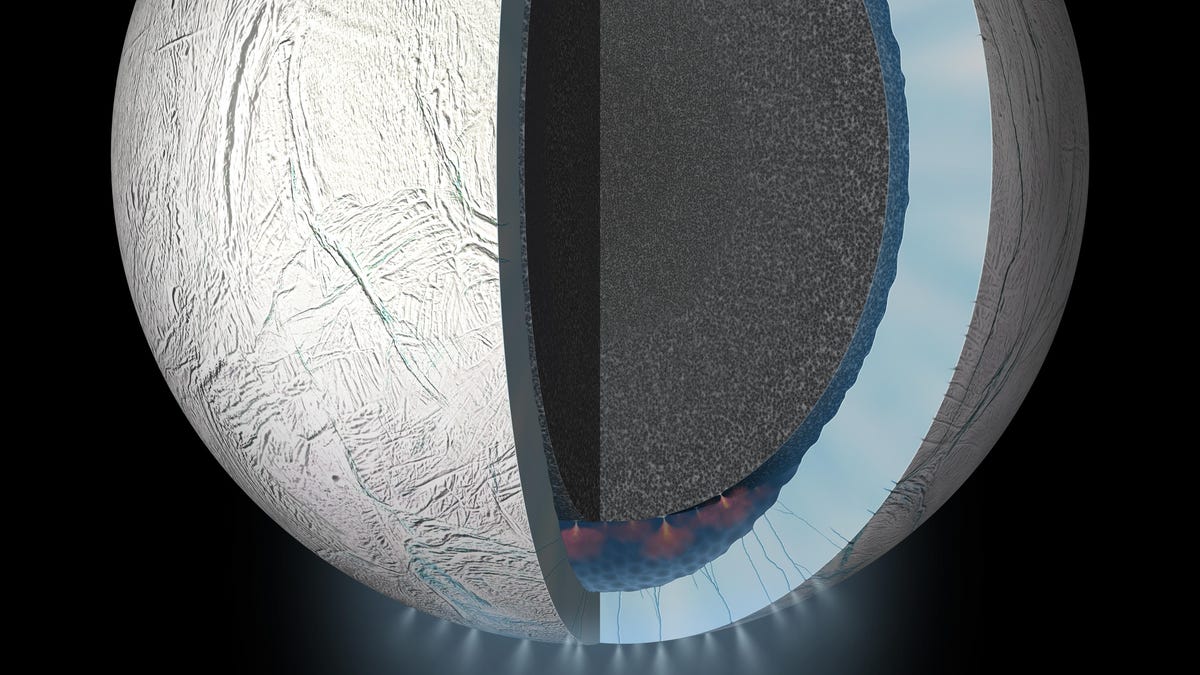NASA flies into icy plume of Saturn's moon in search of life
Enceladus looks like a big ball of ice, but the mysterious spray near its south pole hints at something more. NASA's Cassini craft flies through a plume and takes a sip.
NASA's Cassini spacecraft screamed through the icy plumes shooting out of the south pole of Saturn's moon Enceladus on Wednesday morning to sample the mysterious spray shooting through the planet's shell.
The planned fly-by took the craft within just 30 miles (48 kilometers) of the surface of the frozen world at speeds over 19,000 miles (30,578 kilometers) per hour to see if it hints at the possibility of life in a huge, possibly warm subsurface ocean.
"We're flying deep, the deepest we've ever been through this plume and [Cassini's] instruments will be sensing the gases and will be looking at the particles that make up this plume," Cassini mission designer Brent Buffington says in the video below from NASA.
While Cassini's sensors weren't designed to look for life, they can look for elements of habitability, which might tell us that a global ocean, potentially heated by some geological source beneath the ice, could support simple life forms.
"Life needs three things, right? It needs water, it needs chemistry and it needs energy," Morgan Cable, a scientist on the Cassini mission, says in the video. "Right now, some of these lines of evidence are telling us that Enceladus has these three things."
The data from Cassini's sample of the Enceladus spray, which took place around 9 a.m. PT Wednesday, will lend insight into what elements the spray is composed of and offer hints at what's happening beneath the surface.
Cassini launched in 1997 and has been cruising around the region of Saturn and its moons for years now.
At this point, Wednesday's fly-by should be complete, and the resulting data should be whizzing back to Earth at the speed of light along with some sweet new close-up photos. Light typically takes a little less than 80 minutes to get from Saturn to the sun, but because Earth and Saturn are actually on opposite sides of our star at the moment, it might take a little longer for those images to show up. Then NASA will take some time to process and check everything out, so yeah, let's say Thursday.
Raw images from Cassini post to an online gallery here as soon as they're available if you really can't wait for the commentary from scientists that will eventually go with them.
Otherwise, keep checking back here, where we'll be sure to bring you the news of any potential alien sea monkey playgrounds as soon as we know about it.


